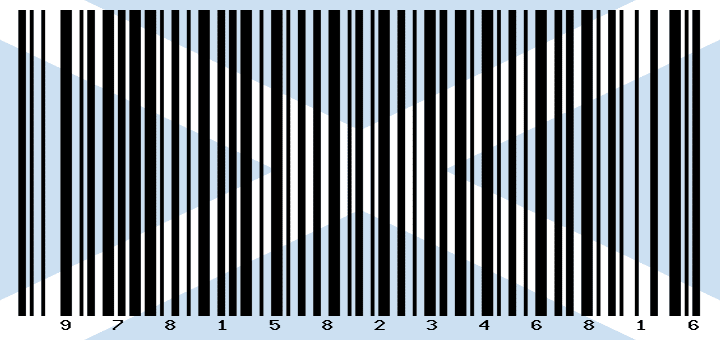 Harry Potter and the Double ISBNs
Harry Potter and the Double ISBNs
As I was writing about Bloomsbury’s broken promise to publish a Scottish Gaelic translation, I started doing some basic fact-checking and started noticed a weird thing.
Bloomsbury has largely stayed out of the HP translations market with four exceptions: Irish, Welsh, Latin and Ancient Greek. Of those, only Latin moved beyond Philosopher’s Stone and then only got Chamber of Secrets. Oddly, all of these translations—and as far as I can tell, no other Bloomsbury Harry Potter book—have two ISBNs: one Bloomsbury US ISBN and one Bloomsbury UK ISBN.
I don’t mean there are two editions—I mean that inside the book, each of them has two ISBNs on the copyright page. They only have one ISBN on the cover though and only one has the US ISBN on the cover (Irish). They were all purchased from Canadian sources (Latin and Ancient Greek from a local bookstore and Irish and Welsh from amazon.ca) and were all printed in the UK. So I’m not sure why there would be an inconsistency!
So, who cares? Well, the type of investigations that I tend to engage in, by necessity, rely on indirect evidence for or against a specific assertion—in this case, that listings online that can be found that claim the existence of a Scottish Gaelic translation of Harry Potter are a mistake. I know that the book does not exist; but what evidence refutes the apparent authority of sites like Amazon and why believe me and not Amazon? If it’s a mistake, where did the mistake originate?
One of the things that I looked at first was the ISBN. If it was invalid, belonged to another book or another publisher, that’s pretty clear evidence that a mistake was made. Turns out that the ISBN does belong to Bloomsbury, but Bloomsbury US. My initial reaction was, “US? Obviously if it was intentionally assigned to Gaelic it would be Bloomsbury UK.” But, experience has taught me not to trust assumptions—although I do have a bad habit of asserting them first, realizing what I did, and then having to walk them back.
Hence, I took a look at Bloomsbury’s other editions and discovered that I can’t rule out this being a genuine ISBN. Not that the book wasn’t published, mind you—it clearly was not! But it is possible that perhaps Bloomsbury pre-allocated the ISBN to this edition assuming it would be published.. Perhaps it should have been removed and reallocated and someone neglected to do so; perhaps internally they just kept it reserved in case the translation ever moved forward. Perhaps someone then neglected to exclude it from a listing they provided to Amazon to catalogue. It remains possible that it is a vestige of Bloomsbury’s intentions, that the mistake was that it was leaked from Bloomsbury into the real world as opposed to someone outside of Bloomsbury somehow mistakenly adding it to a database that got aggregated and spread.
Whether it came from Bloomsbury—I don’t think we’ll ever actually know. But I’m left with two questions (curious soul that I am): 1) can we infer anything about the supposed ISBN? and 2) Why do the other translations have two? (Spoiler alert: you’re not going to be satisfied by the end of this article.)
Sometimes you’ll see multiple ISBNs on the copyright page for the hardcover and paperback editions—that saves them the trouble of changing the page when the only difference is the binding. Obviously, not the case here: they’ve all only been published in hardcover.
Sometimes the same book will have different ISBNs because they were published/printed by a subsidiary in a different country—for example the new Penguin Spanish editions. In those cases though, I would have expected that the copyright pages have only one ISBN like the older ones. Unfortunately, as I haven’t seen them, I can’t confirm if that’s true or not. The early Salamandra Spanish editions also demonstrated that there’s no problem distributing the same book/ISBN in different countries… but perhaps Bloomsbury wanted to track different distribution channels? Seems a bit of stretch to me when there isn’t any variation in the book.
Apparently, if a book has two publishers collaborating on the publication, they are both entitled to put their own ISBNs on it. I’ve never seen an example of that though and I get the impression it would only be to give recognition to distinct entities which Bloomsbury US and Bloomsbury UK aren’t. And if Bloomsbury was concerned about that kind of thing, don’t you think they would have done it with the Canadian Raincoast books that came out with both Raincoast and Bloomsbury on the cover?
Looking at the translations’ ISBNs does actually highlight a pattern! The US ISBNs are sequential.
| Language | Year | UK ISBN-10 | US ISBN-10 |
|---|---|---|---|
| Latin | 2003 | 0-7475-6196-6 | 1-58234-825-1 |
| Ancient Greek | 2004 | 0-7475-6897-9 | 1-58234-826-X |
| Welsh | 2003 | 0-7475-6930-4 | 1-58234-827-8 |
| Irish | 2004 | 0-7475-7166-X | 1-58234-828-6 |
| Scottish Gaelic | 1-58234-681-X |
The supposed Gaelic ISBN doesn’t fit into that pattern which means… absolutely nothing, unfortunately. Had Gaelic been 824 or 829, I would have considered that pretty good evidence of the ‘leaked preallocated ISBN’ hypothesis, but while it is likely a publisher will assign ISBNs sequentially as book projects move forward, there is no requirement or expectation that this is the case.
So, let’s return to my two questions posed above: 1) can we infer anything about the supposed ISBN? and 2) Why do the other translations have two? It seems the answers are: 1) No and 2) I don’t know. Unsatisfying, I know! If anyone is able to provide some insight, I’d be delighted to hear it. In particular, if you have any of the above translations is the UK or the US ISBN on the cover/dust-jacket? I’d love to know how consistent that is!
Acknowledgements:
@mcallister_alaskagrown first let me know that the Gaelic ISBN was floating around the internet.







In Spanish now depending on where it was printed it has a different ISBN and the also varies in size. Also the barcode have something like
“visita: ******.co or *******.ar para más información.”
All of this also applies to Hogwarts Library in Spanish and other works like the screenplays.
I want to know if there is a database of some sort that shows all versions and editions of the books including their ISBN.
Thus far, this is the most comprehensive that I know of—of course I’m happy to make additions!
But in fact, I am currently working on creating such a comprehensive database of all the translations… so keep following along!